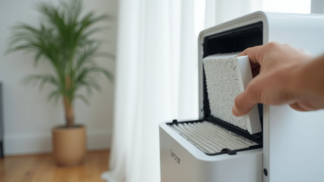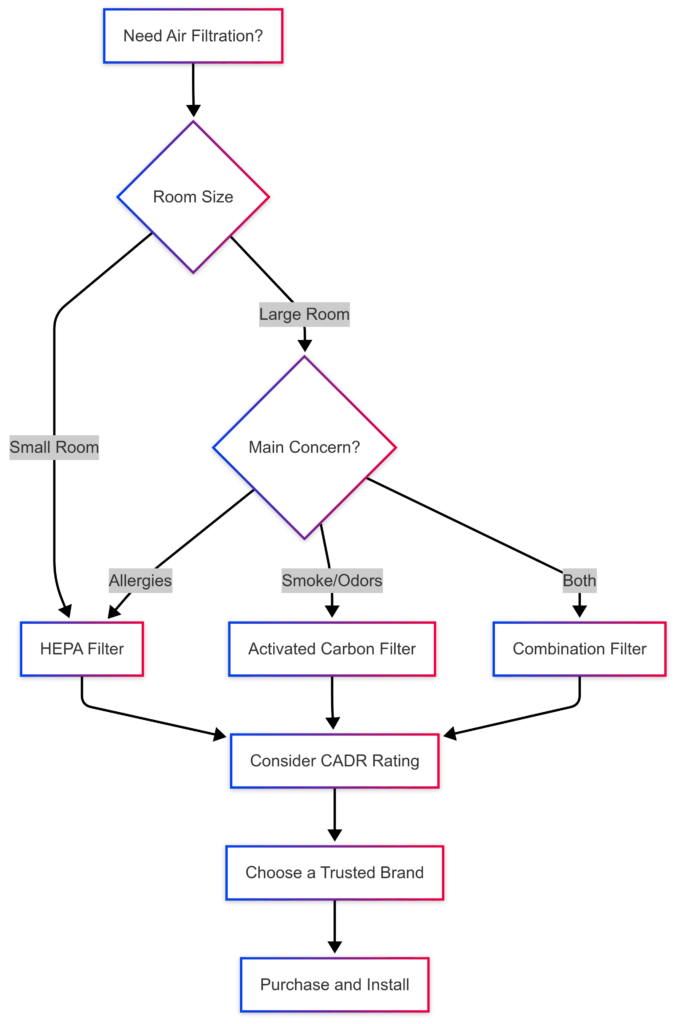
Learn how to set up your smart air purifier for optimal performance. Discover expert tips on placement, filter maintenance, connectivity, and maximizing air quality in your home.
Imagine stepping into your home after a long day, and instead of stale, dust-filled air, you’re greeted with a crisp, fresh atmosphere. Your smart air purifier is the unsung hero behind this transformation, tirelessly working to remove pollutants, allergens, and odors. However, simply unboxing and plugging in your device isn’t enough to reap the full benefits.
To ensure your smart air purifier performs at its best, you need to set it up correctly. From choosing the right location to understanding filter maintenance and app integration, this guide will walk you through every step to help you breathe easier.
(Looking for high-quality replacement filters? Check out FiltersFast.com for an extensive selection.)
Choosing the Best Location
Why Placement Matters
The efficiency of your smart air purifier depends heavily on where you place it. Air circulation plays a key role in filtering out pollutants, and poor placement can limit your device’s effectiveness. Instead of tucking it away in a corner or placing it directly against a wall, choose an open area where air can flow freely. Large furniture pieces, curtains, or shelves can obstruct airflow, so it’s best to keep a reasonable distance from such obstacles.
If your purifier operates in a high-traffic area like a living room or bedroom, it will provide the most benefit. In larger homes, you may find that multiple units work best, ensuring that purified air circulates evenly throughout different rooms. Some models work best when slightly elevated, but always check manufacturer recommendations for the ideal setup.
Initial Setup and Smart Features
Getting Started with Your Device
Once you unbox your purifier, check the filters. Some models ship with protective plastic coverings that must be removed before use. Ensuring proper installation at this stage is key to optimal performance.
With many smart air purifiers, connecting to Wi-Fi and integrating with an app enhances usability. Download the manufacturer’s app—whether it’s Dyson Link, Mi Home, or Levoit VeSync—and follow the pairing instructions. Once connected, you can take advantage of features like remote control, scheduling, and real-time air quality monitoring.
Smart purifiers often come equipped with air quality sensors, which automatically adjust purification levels based on detected pollutants. To maintain accuracy, wipe these sensors gently with a dry cloth every few weeks.
(Need new filters? FiltersFast.com offers quality replacements for various brands.)
Optimizing Performance
Adjusting Settings for Maximum Efficiency
Your smart air purifier likely offers multiple fan speed settings. When pollution levels rise—such as after cooking or during high-pollen seasons—higher speeds are more effective. At night, switching to sleep mode ensures quieter operation without compromising air quality.
If your purifier features an auto mode, enabling it allows the device to adjust its settings in real-time, optimizing energy efficiency while maintaining clean air. Additionally, while it might be tempting to keep doors and windows open for fresh air, doing so while running your purifier allows new pollutants to enter, making filtration less effective. Balancing fresh air circulation and controlled purification can help maintain an ideal indoor environment.

Maintaining Your Smart Air Purifier
Filter Maintenance and General Upkeep
Filters collect dust, pet dander, smoke, and allergens over time, and replacing them regularly ensures optimal performance. Depending on the type, HEPA filters generally need changing every 6 to 12 months, while carbon filters may require replacement every 3 to 6 months. Some pre-filters are washable and should be cleaned every few weeks.
Many smart purifiers come with built-in reminders for filter replacement, eliminating guesswork. If you need high-quality replacement filters, FiltersFast.com provides a variety of options at competitive prices.
Beyond filter changes, regular cleaning of the device itself is necessary. Dust accumulation on the exterior can hinder performance, so wiping it down weekly with a damp cloth is beneficial. The sensors that measure air quality should also be cleaned periodically to ensure accurate readings. Finally, keeping your purifier’s software updated through the app ensures you benefit from the latest performance enhancements and security improvements.
Advanced Tips for Air Quality Improvement
Enhancing the Benefits of Your Purifier
For larger homes, a single purifier might not be sufficient. Adding multiple units to different areas can help distribute clean air more effectively. Bedrooms, in particular, benefit from dedicated air purifiers, ensuring better sleep quality.
Integrating your purifier with smart home systems, such as thermostats or virtual assistants like Alexa and Google Home, enhances convenience. You can automate settings, control purification levels with voice commands, or schedule operation times based on your daily routine.
Many purifiers provide historical air quality data, which can help you pinpoint pollution sources. If your air quality worsens at certain times, you may need to adjust ventilation or minimize indoor pollutants like candles or excessive dust accumulation.
Conclusion,
Your smart air purifier is more than just an appliance—it’s a vital component of a healthier home environment. When set up correctly and maintained properly, it continuously works to ensure the air you breathe is clean and free of harmful pollutants.
For ongoing performance, don’t forget to check and replace filters as needed. FiltersFast.com is a great resource for reliable replacement filters, helping you keep your purifier functioning efficiently.
By making these small yet impactful adjustments, you can enjoy cleaner air and a fresher home environment every day.

